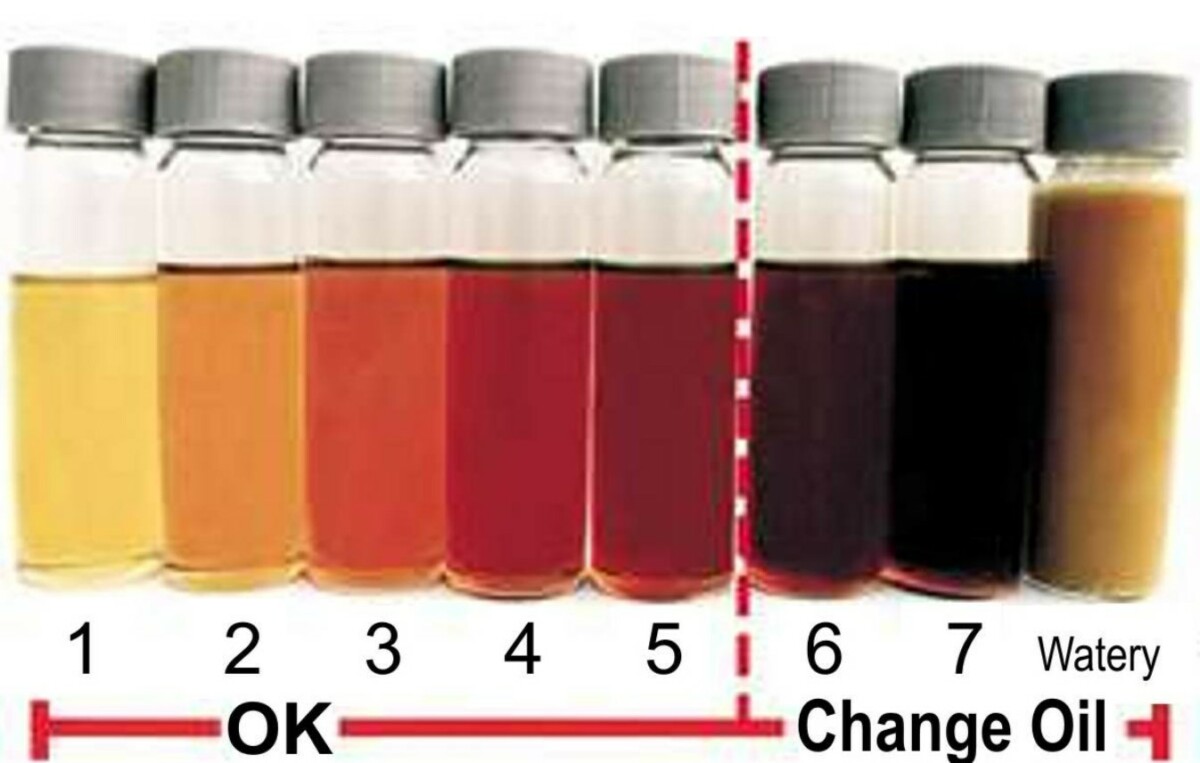The color of the engine oil in your car says a lot about it, but what color is bad engine oil?
Changing your engine oil is one of the most common things you’ll have to do for your car.
Over time and after driving a lot, the oil in your engine gets dirty. If you leave it dirty for too long, it could cause damage to the moving parts of your engine.
One way to tell if your engine oil is bad is by looking at its color. However, figuring out what the color means isn’t always simple.
This article will help you understand the different colors of engine oil you might see and what they indicate.

Credit: carbuyerlabs
What color should engine oil be on the dipstick?
Engine oil can come in various shades of amber, depending on the type of oil and the age of your vehicle.
Different additives in the oil can also make it slightly darker, and it may darken more quickly.
However, right after an oil change, it should generally stay amber for a while.
As time passes, motor oil collects waste from combustion, which makes it more contaminated.
The longer you wait between oil changes, the darker the engine oil gets. This darkening indicates that the oil is doing its job properly.
Yet, for diesel engines, the oil can turn black quickly after an oil change, so it’s important to stick to the maintenance schedule for diesel engines.
Nonetheless, note that this article is primarily focused on gas engines.
Understanding Different Engine Oil Colors
Here is a Dipstick Oil Color Chart to guide you through checking your engine oil.
- Amber:
Amber-colored oil is good and normal. If your oil looks like this, it means everything’s okay. You can keep driving for a while, but keep checking to make sure it stays the same color.
- Dark Brown/Black
If the color of your engine oil is dark brown or black, it might mean it’s time for a change. Dirt can make the oil darker and thicker. However, if it’s thin and dark, it could still be okay, especially if it’s not sticking to the dipstick.
- Cream/Milky
If your oil looks frothy and milky, you’ve got a problem. It could mean the head gasket is broken, letting coolant mix with the oil. This needs fixing ASAP because it can cause big problems like overheating and white smoke from the exhaust.
- Rust
In older cars or humid areas, the engine oil can be rusty in color. Humidity can cause condensation on the dipstick, or there might be leaks from transmission fluid. Either way, if your oil looks rusty, it’s a sign to see a mechanic.
In the past, it was common to change oil every 3,000 miles. But now, with better technology and oil blends, many oils can last much longer.
Some cars and oils can go 10,000 miles or even more between oil changes.
To know how long your car can go without a change, check your owner’s manual.
The manufacturer’s recommendations, especially for cars under warranty, are important to follow. The manual also tells you what type of oil your car needs.
Regular oil needs changing more often than synthetic or synthetic blends, even though they cost more.
Besides, consider your driving conditions. If you drive in extreme temperatures, rough roads, or tow often, you might need more frequent changes due to the extra strain on the engine.
Frequently Asked Questions
What does it mean if my engine oil is black?
If the color of your engine oil is black, it could simply mean it’s getting older and gathering dirt, but if it’s very dark or black, it might suggest there are problems with your engine that need fixing.